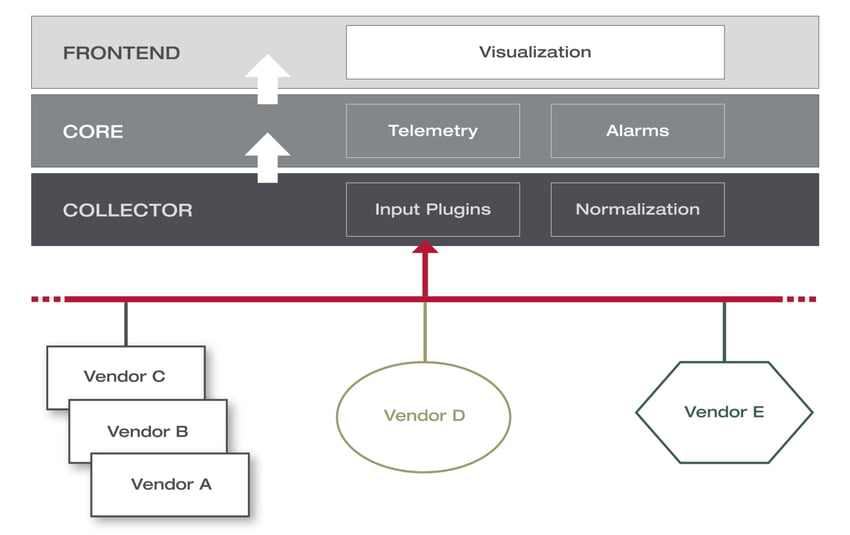Network Management & Performance Monitoring
To ensure smooth running, network operators need extensive information and, particularly, performance data relating to their network infrastructure and utilisation. This can be quite a challenge, as it is hard to find one tool that meets all of those individual requirements. With an increasing amount of monitoring systems that are finding their way into networks, operators can now combine systems to then compile whichever view of their network they need for reactive operation – albeit not without the use of considerable resources. So far so good…
But what does multiple monitoring via SNMP mean for network elements?
Almost all traditional monitoring systems still rely on the slightly outdated Simple Network Management Protocol (SNMP v1 1988, SNMP v2 1993 and SNMP- vV3 2002), which works in pull mode. This means that the different monitoring systems in use constantly request new information from the network elements, resulting in loads on the network elements which can become large enough to restrict the operational network traffic. In addition, information retrieval is often redundant, which in turn puts an increased and unnecessary “management load” on the systems.
What is more, the recorded performance data is usually also very imprecise, since – for the same reasons as outlined above – queries tend to be sent only every 5 to 15 minutes, meaning that events occurring between the queries remain hidden.
Telemetry streaming – a viable alternative?
The good news is that there are already some decent alternatives to the traditional pull mode: Many current network systems can transmit their performance data themselves – in push mode and with the help of telemetry streaming. This method only puts a marginal load on devices, the temporal resolution is accurate to the millisecond and the data variety can be varied and scaled as required – including in dynamic queries, e.g. only over certain periods of time. And yet, telemetry streaming does not come without its challenges either:
- Only few tools currently available are capable of receiving and displaying large sets of telemetry data.
- Hardly any tool can receive and process data from different vendors.
- Systems capable of receiving data from a variety of vendors must first normalise any such data, as the way the information is provided differs from case to case.
- Obtaining the relevant data to be displayed, viewed and evaluated from vast amounts of information is extremely time-consuming and requires very detailed work processes – in some cases even per device.
XNTI for multi-vendor network management and performance monitoring
Time to solve this dilemma. And to do so, we developed the Xantaro Network Telemetry Interface – XNTI for short. Across the entire technological spectrum, the software collects telemetry data from different network components in real time and normalises the information retrieved from different vendors to ensure that it can be evaluated and correlated according to individual requirements.
XNTI consists of a series of individual modules, which are shown in the overview below. The system and its individual components can be scaled freely and individually in order to cope with both small telemetry flows and very large carrier-class networks.

XNTI collects performance data from various network components using both standardized and vendor-specific plugins
XNTI also filters alarms from the telemetry streams, which are displayed separately in the front-end and can be set to trigger information and automation events. Thanks to high-resolution and historically data, the network can precisely and at any time be analysed with regard to current and past KPI/SLA deviations and any necessary optimisations or network capacity expansions.
XNTI and Yukon – an unbeatable team!
With its long-standing focus on technologies and services for high-performance networks, Xantaro knows the challenges that network operators face inside out – and specialises in solving them. Yukon, Xantaro’s very own service engine offering cross-vendor network management, is just one development crafted from many years of experience in consulting projects, operation and support.
When used in combination, XNTI and Yukon complement each other particularly efficiently: While Yukon traditionally uses SNMP to retrieve any data that is not required in high resolution, such as inventory and status data, XNTI collects very high-res system performance data. All data is then combined, processed in the different Yukon applications and made available for network management purposes on the graphical user interface.
Share your opinion with us!
Your perspective counts! Leave a comment on our blog article and let us know what you think.
.png?width=300&height=300&name=Design%20ohne%20Titel%20(7).png)
